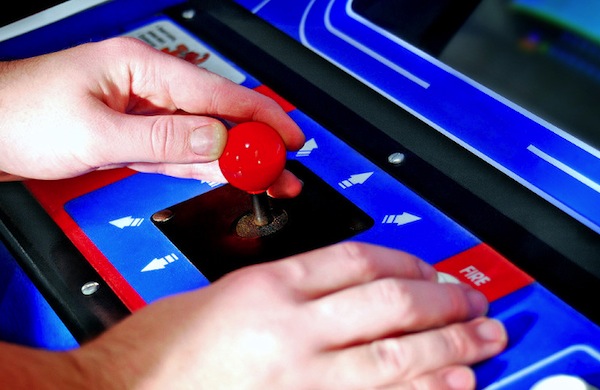
Classic arcade games are synonymous with the iconic cabinet, that softly glowing box that entices gamers with promises of high scores and grateful princesses. Despite their size, cabinets are largely empty inside, designed to house just a handful of key components. To save you the trouble of tearing open a vintage cabinet yourself, here's a rundown of the most-important parts:
Circuit Board
Typically strapped to the side of the interior, the circuit board is what allows an arcade machine to actually boot up and run a game. Early on, manufacturers built games directly into the circuitry of their arcade boards, which saved money on manufacturing costs but also made games more expensive, as arcade owners would have to purchase a complete unit to get a new game. Eventually, companies designed circuit boards separate from games, allowing owners to simply swap out the game data in a manner similar to home consoles.
Coin Mech
Different cabinets might use any variety of designs for the coin mechanism, but its purpose is always the same: verify if a coin is legitimate and, if so, turn it into a game credit. Whether it's an arcade token or a US quarter, each coin has to pass two tests. First, a counterbalanced cradle tests the weight and shape against a presettable standard. After that, the coin then moves on to a small magnet, which makes sure it's composed of the right metal. At either stage, any coin that doesn't meet the criterion simply passes through to the coin-return slot. If all's well, however, the coin falls through to the collection bin, triggering the credit counter on its way down.
Monitor
Most vintage arcade machines contain CRT monitors, similar to standard "picture-tube" TVs. Since TVs are rectangles, not squares, the monitor may be aligned vertically or horizontally depending on the game. The endless ladders and elevators of Donkey Kong, for instance, require a vertical orientation, whereas NBA Jam stretched its frenzied court across a horizontal screen. The speaker usually sits just above the monitor, facing down toward the player so they can discern the game's beeps and boops from the cantina's drunken droids.
Control Panel, Marquee, and Stickers
Just as some circuit boards can accommodate multiple games, cabinet features are interchangeable. Lit from behind by a fluorescent bulb, the removable marquee at the top ranges from plexiglass to plastic to solid glass. The detailed artwork on the sides of cabinets may look like permanent tattoos, but they're actually simple adhesives. Even the control panel—the assembly of joysticks and buttons often unique to each game—can lift right off to make way for a new array.




